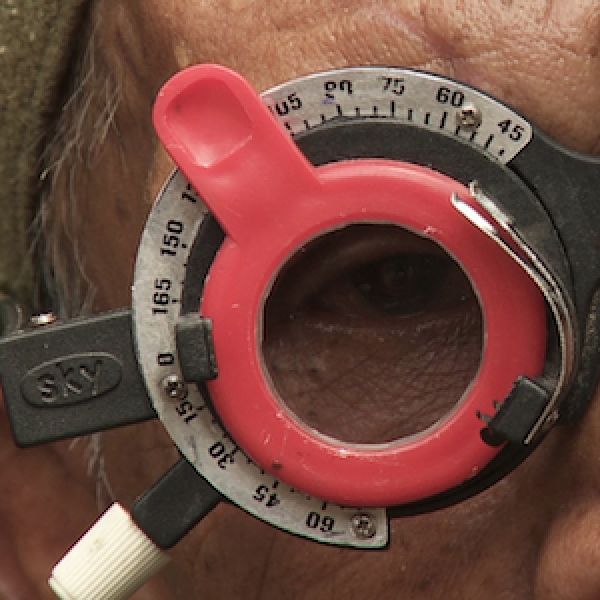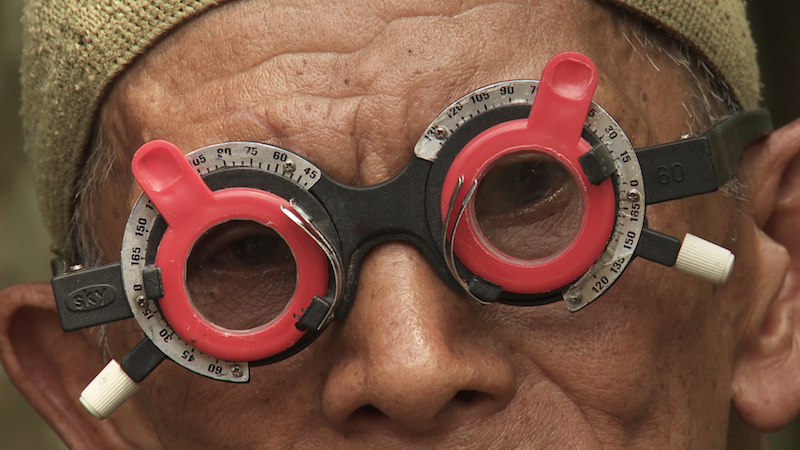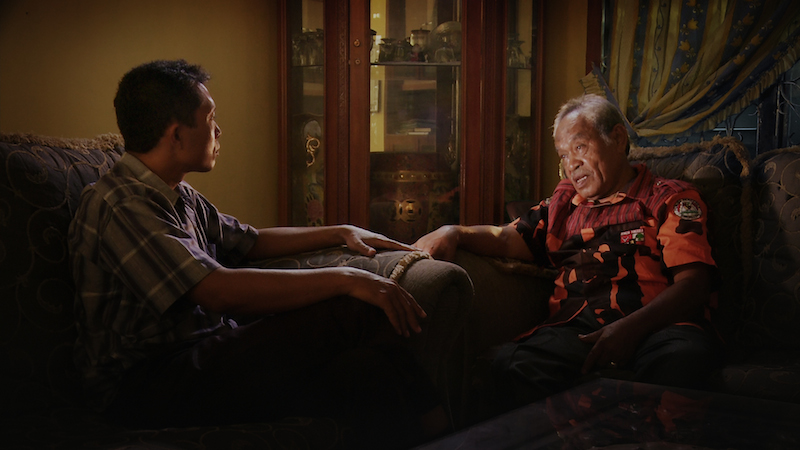The Look of Silence Review & Press Conference (2014 Venice International Film Festival)
‘The Look of Silence’ is the sequel to Oppenheimer’s ground breaking documentary ‘The Act of Killing’ (2013). The two documentaries were filmed consecutively over more than a decade in Indonesia. Oppenheimer says he knew that once the first documentary The Act of Killing was released, it would be far too dangerous for him to ever go back. The Act of Killing swept up multiple international awards including, a 2014 BAFTA, a Golden Globe and an Oscar nomination for Best Documentary Feature. More importantly, it awakened the world to the pain and the trauma that grips Indonesia, any group of people, when truth is denied and silence is complicit in endorsing terrible crimes. Between 1965 and 1966 an anti-communist purge was carried out by government Death Squads who perpetrated unspeakable atrocities. In the mass killings an estimated 500,000 people were murdered. Today, the Indonesian government still refuses to acknowledge these events and has taken no responsibility for them.
In ‘The Look of Silence’, Oppenheimer documents survivors confronting their killers. Adi met Oppenheimer almost a decade ago. He is the son of genocide survivors but was born after the genocide. When Adi viewed Oppenheimer’s footage used for ‘The Act of Killing’, he discovered how his brother was killed, the murderer’s identity, and why his family lived in total fear. Adi’s brother’s murder had been witnessed and was synonymous with the genocide. Here was proof the enormity of the atrocity and the cover up. Adi and his family, like countless others, had been traumatized but not allowed to talk about it. They have been forced to publicly exonerate the killers, people who remain in power to this day and with whom they interact in their community.
Adi made Oppenheimer a brave proposition; to film the perpetrators in interviews in which Adi would ask the questions. This was a very dangerous undertaking. Since the filming, Adi and his family have had to be relocated thousands of kilometers from their village. Adi said he only wanted the perpetrators (Death Squad killers and their families) to acknowledge and admit what they had done and admit it was wrong. At the Venice Press Conference Adi said, “a film cannot cause healing for what my family has been through. The stigma of the survivors has taken root and only our death will ease the trauma that we feel.” “We all live in the same community and we see each other with various levels of fear and suspicion.”
Adi was eager to work with Oppenheimer and proposed that he meet the man who killed his son, a man still in power and living happily with his family. During the interviews, the killers respond with fear, anger, and naked threats. Ari managed the encounters with dignity, asking hard questions about how the killers see what they did, how they live side by side with their victims families, and how they think they see them. This documentary shows a progression of what has happened and the monstrosity of it all. It demonstrates the importance of allowing the survivors to ask the questions, have the truth recognized thus allowing the healing to begin.
Oppenheimer hopes that through his documentaries he can “expose the consequences for all of us about what happens when we build our everyday reality on terror and lies”. The Look of Silence explores what it is like to be a survivor in such a reality. He calls his documentaries ‘acts of intervention’. Anonymous credits run at the end of the film, a necessity to protect the safety of the crew. It is a sign that not much has changed in Indonesia.
At the end of the filming Oppenheimer confesses he had a great shock. “I had been filming for months. The mother of the family who killed her son was an elementary school teacher. We all live so closely together. To our shock the family decides to deny everything and so I make them watch another clip. It is a very peculiar thing to have this divergence at the end of the film – it creates a mess. I decide to do it. It shows so how crossing the line allows the truth to be exposed.” Why did the family suddenly decide to deny the truth? Was acknowledging and living with the reality to painful for them? Oppenheimer says he had just finished the film a few days ago. There are people who are sane and insane. He feels that people fear that if they acknowledge the truth, they may have to give up some power to make amends. There is also the fear of how they will live with themselves once it is acknowledged. This is a collective insanity.
‘The Look of Silence’ shows with searing clarity the perpetuated suffering within Indonesia. Oppenheimer describes it as living with a collective insanity that happens when atrocities are not confronted, acknowledged, exposed and forgiven; when there is no ‘Truth and Reconciliation’. The Look of Silence premiered at the Venice International Film Festival and goes next to Toronto for TIFF14.
Winner Grand Jury Prize Venezia71 2014 Venice International Film Festival
Moira Romano




